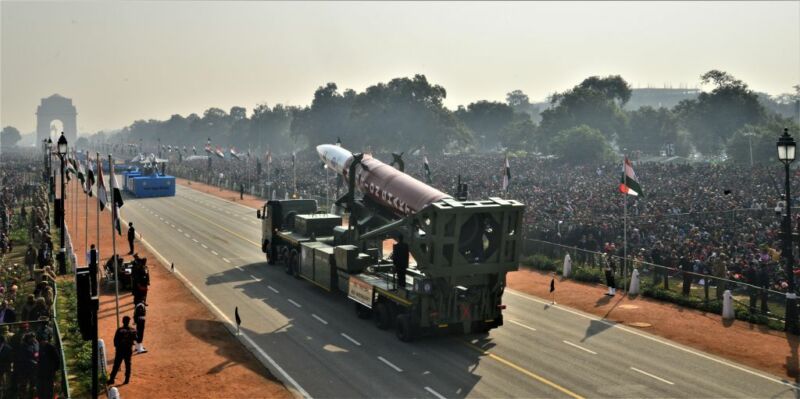The creation of the US Space Force has conjured up all manner of fanciful notions about combat in space. Will military satellites act like X-wings and Tie Fighters, zipping around and shooting at one another? Or perhaps will larger ships akin to the USS Enterprise fire photon torpedoes at enemy warbirds?
Hardly. But even those with more realistic expectations for what could happen if nations went to war in space—perhaps satellites using orbital kinetic weapons to attack other satellites?—may not fully appreciate the physics of space combat. That’s the conclusion of a new report that investigates what is physically and practically possible when it comes to space combat.
Published by The Aerospace Corporation, The Physics of Space War: How Orbital Dynamics Constrain Space-to-Space Engagements lays out several basic concepts that are likely to govern any space combat for the foreseeable future. All of the physical constraints suggest battles will need to be planned far in advance.
Unlike a war on Earth, which typically involves an effort by opposing forces to dominate a physical location, satellites in orbit do not occupy a single location. Therefore, the report authors Rebecca Reesman and James Wilson write, controlling space does not necessarily mean physically conquering sectors of space.
Rather, control over the high ground involves reducing or eliminating adversary satellite capabilities while ensuring one retains the ability to freely operate their own space capabilities for communications, navigation, observation, and all the other increasingly essential ways in which militaries rely on space.
When considering how to control space, the authors lay out the ways in which space combat is counter-intuitive for policymakers and strategists.
- Satellites move quickly, but predictably: Satellites in commonly used circular orbits move at speeds between 3km/s and 8km/s, depending on their altitude. By contrast, an average bullet only travels about 0.75km/s. They are here, and then gone.
- Space is big: The volume of space between low-earth orbit and geostationary orbit is about 200 trillion cubic kilometers. That is 190 times larger than the volume of Earth.
- Timing is everything: Within the confines of the atmosphere, airplanes, tanks, and ships can nominally move in any direction. Satellites do not have that freedom. Due to the gravitational pull of Earth, satellites are always moving in either a circular or elliptical path, constantly in free-fall around the Earth. Getting two satellites in the same spot is not intuitive. Therefore, it requires careful planning and perfect timing.
- Satellites maneuver slowly: While satellites move quickly, space is big, and that makes purposeful maneuvers seem relatively slow. Once a satellite is in orbit, it requires time and a large amount of delta-V to perform phasing maneuvers.
Given all of this, for engagements in space, maneuvers and actions will have to be planned far in advance, Reesman said in an interview. “Any conflict in space will be much slower and more deliberate than a Star Wars scene,” she said. “It requires a lot more long-term thinking and strategic placement of assets.”
In a perfect world, space might be viewed as a sanctuary. But since the mid-1970s and the advent of anti-satellite weapons in the Soviet Union and the United States, space has been treated as a contested domain by the United States, the Soviet Union, and other emerging powers. While no shooting wars have broken out in space, the ability to take down space weapons has been seen by new powers such as China (in 2007) and India (in 2019) as a means to demonstrate their capabilities.

























